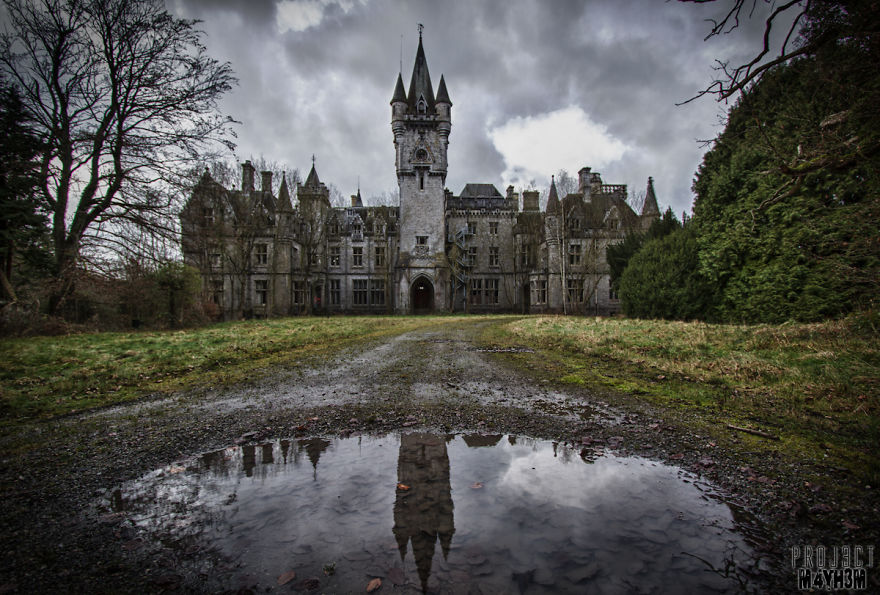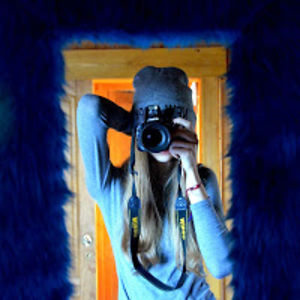Château Miranda
The History of Château de Noisy (Château Miranda) Château de Noisy is a beautiful castle in the open lands of Belgium. The former ‘holiday camp’ is in a heavy state of disrepair and despite several offers, the owners refuse to sell it. It has suffered heavily from vandalism and the details from the interior have been removed to be used in another castle. Château de Noisy is one of the most beautiful locations we have seen. As of December, 2013 – the owners of Château de Noisy have formally applied for licence to demolish this heritage castle. Please see the end of this article for links to the formal petition against this action.Château de Noisy was to be built with many towers, conical roofs, and other Neo-Gothic details, with approximately 500 windows. Milner did not get to finish the castle as he died before the building was completed. The building was continued by the French architect Pelchner, extending the Château largely. The clocktower was finished in 1903 and is 183 feet tall, and 1907 saw the completion of building activity. Initially Chateau Miranda, boasting beautifully landscaped gardens, served the family Liedekerke de Beaufort as a summer residence. During the Ardennen offensive in World War II, the château was briefly occupied by German troops. During the Battle of the Bulge, there was also fighting on the property. From 1950 the castle was taken over by the National Railway Company of Belgium (NMBS) as a ‘holiday camp’ for children who suffered from ill health. Around this time, the castle was named Home de Noisy or Château de Noisy. Equipped with 200 places the ‘holiday camp’ gave shelter to the children, providing fresh air, a fabulous playground and healthy food. The regime at Home de Noisy was strict, it was run by female officials and the children dressed uniformly. In the square between the outbuildings a small football pitch was set up and the fountain in the garden was converted into a swimming pool. These were of various nationalities and language regions: French and Flemish children between 5 and 14 from Belgium and during the holiday season, children from Italy.
Château de Noisy
The History of Château de Noisy (Château Miranda) Château de Noisy is a beautiful castle in the open lands of Belgium. The former ‘holiday camp’ is in a heavy state of disrepair and despite several offers, the owners refuse to sell it. It has suffered heavily from vandalism and the details from the interior have been removed to be used in another castle. Château de Noisy is one of the most beautiful locations we have seen. As of December, 2013 – the owners of Château de Noisy have formally applied for licence to demolish this heritage castle. Please see the end of this article for links to the formal petition against this action.Château de Noisy was to be built with many towers, conical roofs, and other Neo-Gothic details, with approximately 500 windows. Milner did not get to finish the castle as he died before the building was completed. The building was continued by the French architect Pelchner, extending the Château largely. The clocktower was finished in 1903 and is 183 feet tall, and 1907 saw the completion of building activity. Initially Chateau Miranda, boasting beautifully landscaped gardens, served the family Liedekerke de Beaufort as a summer residence. During the Ardennen offensive in World War II, the château was briefly occupied by German troops. During the Battle of the Bulge, there was also fighting on the property. From 1950 the castle was taken over by the National Railway Company of Belgium (NMBS) as a ‘holiday camp’ for children who suffered from ill health. Around this time, the castle was named Home de Noisy or Château de Noisy. Equipped with 200 places the ‘holiday camp’ gave shelter to the children, providing fresh air, a fabulous playground and healthy food. The regime at Home de Noisy was strict, it was run by female officials and the children dressed uniformly. In the square between the outbuildings a small football pitch was set up and the fountain in the garden was converted into a swimming pool. These were of various nationalities and language regions: French and Flemish children between 5 and 14 from Belgium and during the holiday season, children from Italy.




1
0